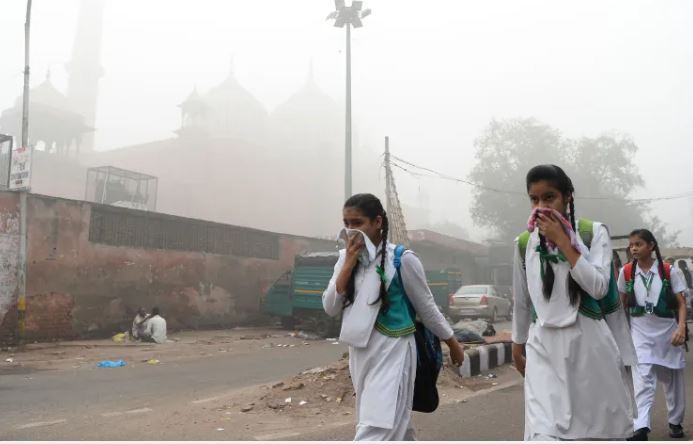Delhi Pollution
NEW DELHI: Delhi experienced another morning shrouded in hazardous air on Wednesday, as the capital recorded an Air Quality Index (AQI) of 426, categorizing it as “severe.” This occurred following the coldest night of the season thus far. According to the India Meteorological Department (IMD), the minimum temperature fell to 11.1 degrees Celsius on Tuesday night.
The combination of low temperatures and thick fog has enveloped the city, resulting in visibility being reduced to 500 meters as of 8:30 AM. The IMD has predicted that dense fog will continue throughout the day, with morning humidity levels reaching 84 percent. The maximum temperature is anticipated to reach 25 degrees Celsius. At 9 AM on Wednesday, the Central Pollution Control Board (CPCB) reported an AQI of 426 for Delhi.
An AQI of 400 or above is deemed “severe,” which poses health risks not only to vulnerable populations but also to healthy individuals. Out of the 38 monitoring stations in the national capital, all but one were in the red zone, with the Lodhi Road station recording an AQI in the “very poor” category.
Delhi’s air quality first entered the “severe plus” category on Sunday, prompting the activation of Stage IV restrictions under the Graded Response Action Plan (GRAP) on Monday morning. These restrictions include a total ban on construction and demolition activities, as well as the suspension of in-person classes in schools.

The Commission for Air Quality Management (CAQM) has also imposed further restrictions, such as prohibiting the operation of four-wheeler diesel light motor vehicles (LMVs) in Delhi and the surrounding NCR districts, with exceptions for BS-VI vehicles and those engaged in essential or emergency services.
Additionally, diesel-powered medium and heavy goods vehicles are barred from entering Delhi, except for those transporting essential goods. Only electric and CNG trucks are allowed, with certain exceptions for essential services.
Initially launched in 2017, the GRAP system classifies air quality into four distinct levels according to their severity: Stage 1 is designated as “poor” (AQI 201-300), Stage 2 is labeled “very poor” (AQI 301-400), Stage 3 is identified as “severe” (AQI 401-450), and Stage 4 is termed “severe plus” (AQI exceeding 450).




